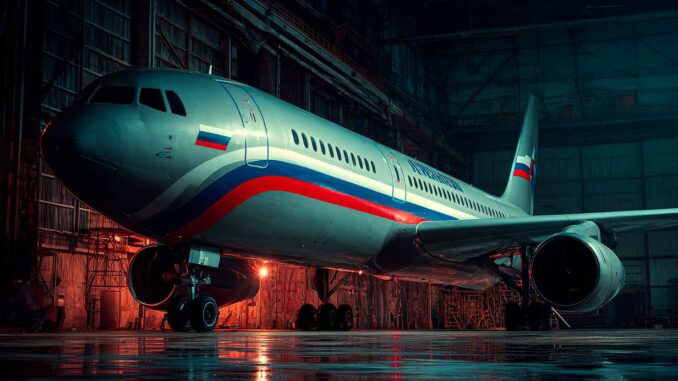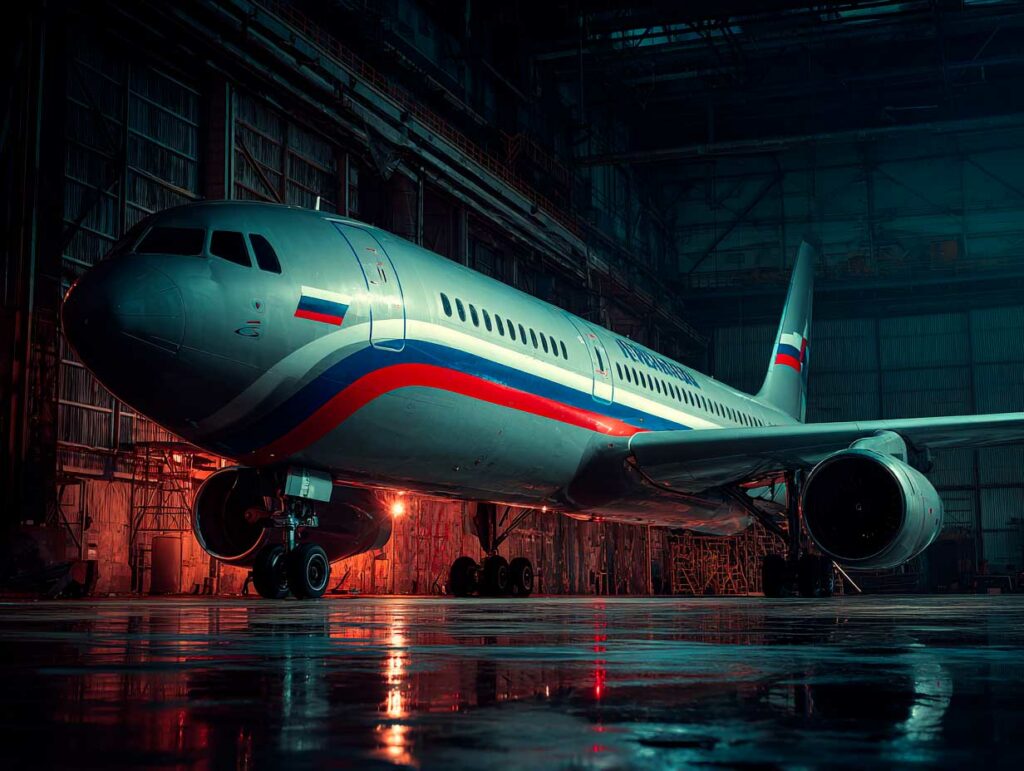
Here is a detailed overview of Russia’s tactics for keeping its fighter jets in the air in the face of sanctions, through diversion channels, cannibalization, and local production.
The diversion system for importing aircraft parts
Russia is managing to keep its aircraft flying despite severe international sanctions. In March 2022, Airbus and Boeing suspended all supplies of spare parts and aircraft maintenance. At the same time, China blocked the export of critical components, including parts for Safran/Saturn SaM146 engines for the Sukhoi Superjet 100.
In response, Russian companies have set up a complex network of diversion channels. Between June 2022 and June 2023, they imported nearly $1.2 billion worth of spare parts via non-sanctioned third parties, such as the United Arab Emirates, Turkey, and China. Finland reports some 4,000 shipments of Boeing and Airbus parts that were smuggled into the country.
The transactions are carried out through shell companies, transshipment ports, and falsified documents. These methods allow 98% of the components to enter Russia via third countries without being detected by the original manufacturers. These illegal imports ensured a short survival period for the civil and military fleet.
This strategy illustrates a parallel and opaque supply chain designed to circumvent sanctions while maintaining operational aviation activity.
Forced reuse of aircraft: cannibalization and industrial tinkering
As early as the summer of 2022, the Russian government advised companies to use certain aircraft as a source of parts in order to extend the life of other aircraft. This practice of cannibalization has kept the fleet flying despite the lack of new parts.
Aircraft such as the Airbus A320, A350, Boeing 737 and Sukhoi Superjet were stripped down to provide components for other aircraft. These methods led to major malfunctions, such as disabled brakes: in some cases, pilots had to rely exclusively on thrust reversers to slow down.
In addition, internal regulations have been relaxed to extend the validity of critical parts, at the risk of compromising safety. These practices have led to a significant increase in technical incidents and raise questions about the reliability of aircraft in flight.

The requisitioning of leased aircraft: a disguised expropriation
Before the sanctions, around 515 commercial aircraft leased from foreign companies were used by Russian airlines, with an estimated value of $10 billion. In March 2022, Russia passed a law authorizing the forced conversion of these aircraft, which were re-registered under Russian jurisdiction.
Most of the aircraft remained in service in Russia, sometimes without international certification, which allowed the fleet to continue operating despite the embargo.
Discreet support from allied countries for maintenance
Countries such as Iran provided key support. In April 2023, Aeroflot began sending its aircraft to Iran for maintenance, taking advantage of the expertise Iran had acquired as a result of the sanctions.
An investigation reveals that Russia has also set up opaque financial flows via the United Arab Emirates and other intermediaries, similar to its partnership with Iran in the drone sector. These networks facilitate the exchange of parts and repairs, despite controls.
The shift towards local production: “Russification” of the aviation industry
Faced with the breakdown of supply chains, Russia has launched a local substitution strategy. In March 2025, a prototype of the Yakovlev Superjet-100, equipped with the 100% Russian PD-8 engine, completed a 40-minute flight. The goal is to obtain certification by the end of 2025 and to produce 89 aircraft by 2030.
The MC-21 program, initially equipped with American engines, has been delayed by two years, with production of the Russian version (MC-21-310) scheduled to begin in 2026. Reuters points out that by early 2025, only one out of 15 planned aircraft had been delivered due to industrial difficulties.
UZGA (Ural Works of Civil Aviation), a subsidiary of Rostec, is playing a central role in this conversion, manufacturing components and driving projects such as the LMS-901 “Baikal” and TVRS-44 “Ladoga.”
Thus, aeronautical sovereignty is becoming a strategic imperative.
The limitations and risks of an improvised model
These strategies ensure that Russia’s air capabilities are partially maintained, but they rely on costly, risky, and unsustainable solutions.
The use of diversionary channels and cannibalization increases logistics costs, weakens aviation safety, and undermines the sector’s economy.
The use of expropriated aircraft limits access to the international market. Delays in programs such as the MC-21 illustrate structural weaknesses and industrial bottlenecks.
In the long term, only a genuine increase in industrial skills and a consolidated national production network can stabilize the sector. But this requires time, strong state coordination, and massive investment in an already strained economic environment.
A fragile horizon to watch
Russia is deploying an arsenal of ingenious tactics—clandestine imports, cannibalization, technical allies, and relocation—to keep its aircraft flying.
These measures are stopgap solutions. In the short term, they save essential air capabilities. But they carry growing risks for security, real autonomy, and industrial viability.
In the future, the challenge will be to see whether these “Russification” efforts can be sustained, or whether they remain tactical responses to a major strategic crisis.
War Wings Daily is an independant magazine.